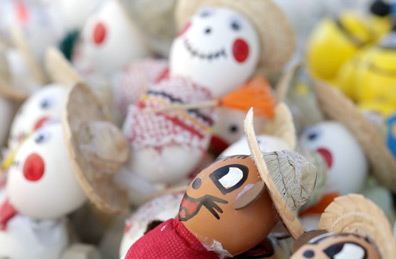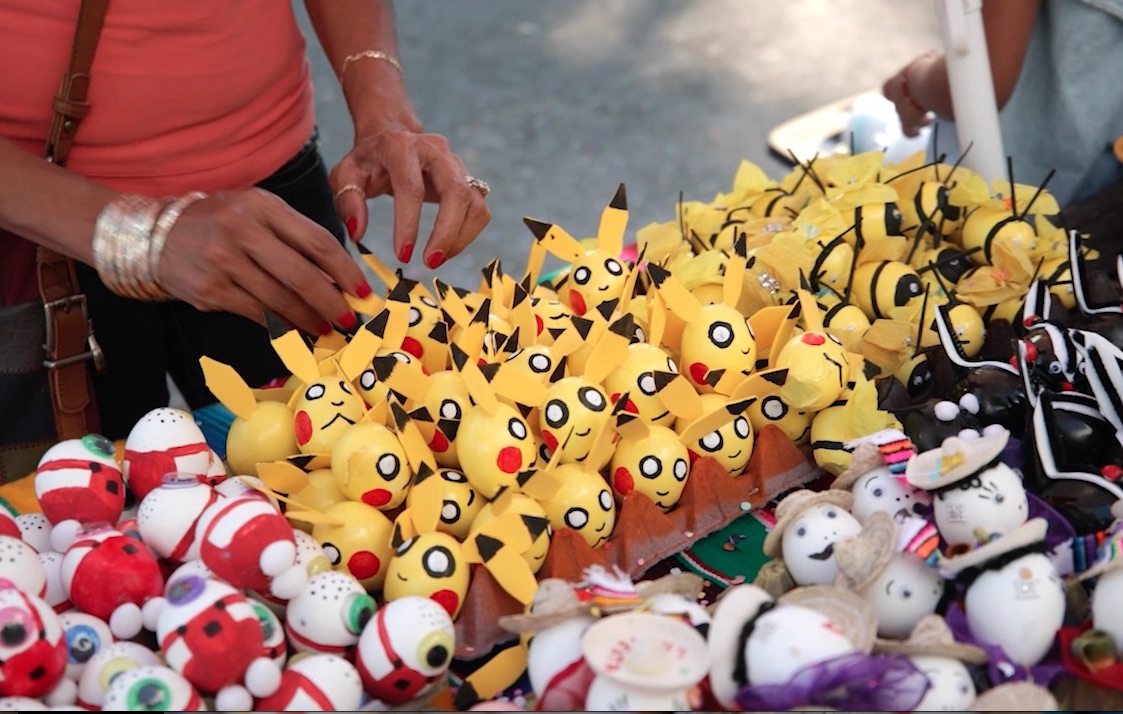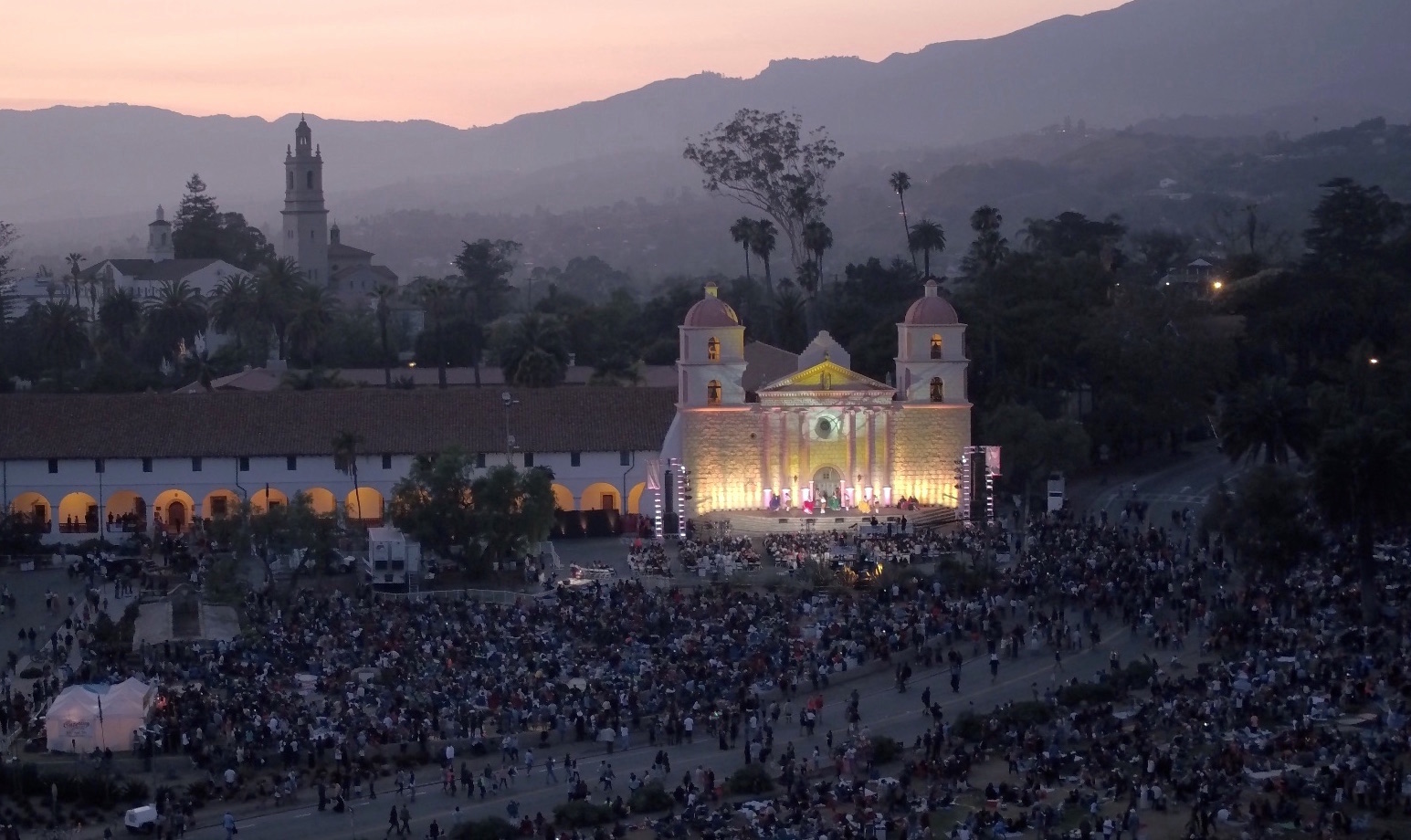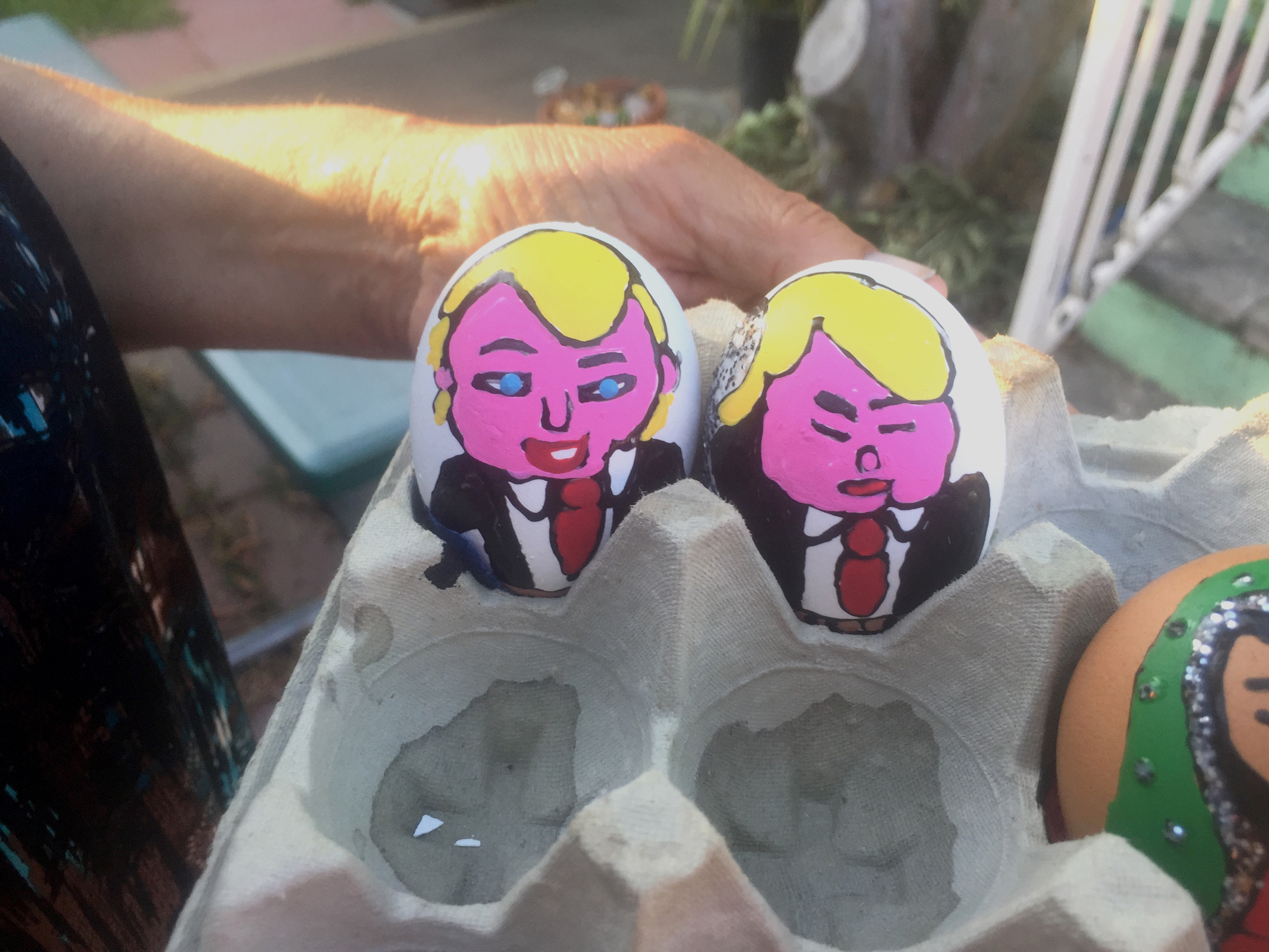‘Cascarón’
Director Casey McGarry and Producer Chris Price

The making of Cascarón started as a conversation over drinks in the reincarnated version of Jimmy’s Oriental Gardens, which was the subject of filmmaker Casey McGarry’s first documentary effort in 2015. McGarry was shooting the breeze with Chris Price, an eighth-generation Californian, over the subject of cascarones, the wonderful confetti eggs that transform Santa Barbara city streets into a landscape of Jackson Pollock–like canvases every Fiesta.
Out of that conversation, this sweet and touching 16-minute documentary was hatched. Along the way, I got briefly sucked into this venture, acting as enthusiastic cheerleader and occasional interviewer. I, too, am a nut for cascarones.
For McGarry, an Irish Catholic paddy boy from the Mesa whose parents both taught ESL, making Cascarón was his way of expressing cultural gratitude to the city’s Mexican and Chicano cultures. The film is visually lyrical in the extreme, haunting and suffused with not-so-subliminal melancholy.
How could it not be? Santa Barbara has always embraced elements of Hispanic culture while keeping the people of that culture at arm’s length. Nowhere is that more in evidence than during the city’s fabled Fiesta celebration. Throw in the long shadow cast by Donald Trump, and it’s a documentary screaming to be made.
McGarry, however, is no polemicist. To the extent he makes such political points, he does so in a decidedly un-pointed fashion. It’s clearly the case that cascarones — made largely by Mexican immigrants and their descendants and bought largely by Anglos — reflect the city’s subtle but implacable Juan Crow separation. McGarry hints at this and illustrates it, but doesn’t pick at it.

Instead, he provides gentle close-ups on a handful of families who make the ubiquitous cascarones, allowing them to explain the how and why of things. Along the way, he mixes in footage from Fiesta, drooling pan shots of cascarones on parade, and of course, cascarones in full, festive explosion — the cascarón equivalent of the orgasm.
Left unanswered for another day are the origins of the cascarón and why Santa Barbara might be the only place on the planet where it survives with such joyous exuberance. Likewise, we don’t see what’s really involved in getting so many of these magical eggs emptied, filled, and painted in time for Fiesta. I have no shortage of crazy cascarón adventures of my own; I would have liked to hear others’.
Perhaps one day there will be a more lingering follow-up. In the meantime, this qualifies as a sweet cinematic kiss to a wonderful tradition.
Why’d you decide to do this film?
Casey McGarry: A few years back when I made Grasshopper for Grandpa — the documentary on Jimmy’s Oriental Gardens — I met Chris Price, the codirector on this project. After he saw the film, he came to me with the idea of doing a film on finding “las hueveras” (the egg ladies) that actually make the cascarones for Fiesta and wanted to try and tell their story.
Everyone in town knows of cascarones, the beauty of them, and the mark they leave, but no one really knew where they came from, how the tradition got started, and the significance behind them, especially their particular history in Santa Barbara. It seemed to be a good local story with some definite unknowns to try and reckon with.
Chris Price: I had been toying with the idea of a doing a film on cascarón makers on my own for several years. But being a full-time land-use consultant with no filmmaking experience, I knew it would prove difficult. After I saw Grasshopper, I knew Casey was the right person to help make it happen.
Did you know any of the subjects beforehand?
Casey McGarry: I personally didn’t know any of the main characters in our film before heading out and trying to find them. I think Chris did some research and rode his bike around Milpas Street on the Eastside trying to find them, asking random people where he could find “the women who make the casacarones.”
One of those days, he got tipped off about Belen, the one who sells tamales around town who also makes cascarones. It turns out she lived within a couple-block radius of some of the other women, Rosalva and Carmen, who also make the eggs. So it was lucky.
Those are the three women who, along with their families, turned out to be the main sellers downtown during Fiesta, and the main characters in our film.
Chris Price: Finding the subjects was one of the biggest challenges early on. A number of people I approached refused to be interviewed. I think there was a fear that I was some kind of undercover ICE agent on a sting operation. Fortunately, I had known Belen and Florentino for several years because they would come by my house, selling tamales. Our relationship grew to the point that I would go their house anytime I wanted tamales.
After being shut down on the cold-call approach, I decided to stop by their house and ask if they knew of any hueveras. Little did I know they had been making them for 19 years. After that, using Belen and Florentino as a reference really helped opened doors.
You don’t dive too deeply into any of the political situation related to immigrants. Were you tempted to do so?
Casey McGarry: I was. I had some more politically driven scene ideas I would have wanted to try and capture if I had initially gone into this story with a bigger and longer project in mind to begin with. Alas, my style tends to lean more toward the personal-portrait style or “human interest” story type, so our main focus was these people’s backgrounds — where they came from and how they got into making the cascarones in the first place. Questions like, who passed the tradition of making these eggs on to them?
It would have been fun to make a more political documentary, but it’s kind of nice not to beat certain controversial messages over the heads of your audience and let them infer certain things on their own.
For example, one of the women in our film, Rosalva Manzo, makes hand-painted Trump eggs. On the surface, that’s pretty political and also really funny, but it depends on how you spin it and what you do with the eggs. Do you collect them, break them, or scoff at them?
I think with all the stuff going on with DACA and immigration policy, women’s rights, etc., this film is definitely a conversation starter. People will walk away with questions and wanting to know more; at least that’s been my experience so far.

Chris Price: My original vision for the film was not only to tell the story of who makes the cascarones, but also as a vehicle to underscore certain ironies of Fiesta and how undocumented immigrants are carrying on the tradition enjoyed by what is largely a white upper- and middle-class Santa Barbara.
For practical reasons (and the fact I have no filmmaking experience), I deferred to Casey’s idea to make this a short rather than a feature and focus on the personalities rather than the political controversy. Nevertheless, I think there is enough subtle reference in the film regarding immigration and race issues that the audience will be left with an impression of that message.
Any particular challenges on this film compared to your past docs?
Casey McGarry: This is my first attempt making any type of film with a foreign language involved. The film is composed of mostly Spanish and broken English. Although both Chris and I speak some Spanish, this was still the most challenging part in completing the film.
Both my parents have taught ESL and lower-level English my entire life. My dad was chair of the ESL department at SBCC for years and first got into it because of his love for Mexican culture and the romanticism in the language and music.
So you can say this is a thank-you letter to my parents for providing me that experience growing up and surrounding me with their good-hearted, hardworking Mexican students. It’s also a personal love letter to this Hispanic culture of Santa Barbara and beyond. Why not give the marginalized a voice for once?
Chris Price: Time and money were both a constraint, but Casey worked his magic. We only started filming in July, and it was entirely self-funded. Hopefully on the next project I’m involved with, there will be more of both.
What’s your next project?
Casey McGarry: I just signed on to do a documentary project on The Barbarettes (1956–1973), the Santa Barbara precision drill team composed of high school girls from all over the county who caused a sensation in parades and public events across the country, from Hollywood to Washington, D.C. They performed at the first Super Bowl at the Los Angeles Coliseum in 1967.
I’m also hoping to delve more into the story of Robinson Eikenberry, the renowned local record producer and recording engineer, who suddenly passed away too young of a heart attack at the young age of 47 this past year.
I want to do a movie about his body of work and the deeply mystifying spiritual side of his life that many of the artists who worked with him want to know more about because it was pretty fascinating.
Chris Price: I have a couple more story ideas in mind. With some luck, this film will give me enough credibility to assemble a team to make them come to fruition.




